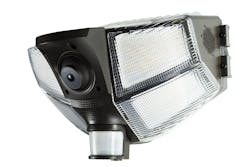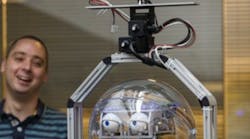Contract guard companies are enduring challenging times due to strong demand for security services, impeded by difficulty hiring and retaining personnel for those posts. In fact, guard companies have reported they are walking away from new contracts due to the inability to attract and hire personnel. This begs the question: Why walk away from revenue and margin growth when technology designed specifically to augment the tasks of humans and create a guard force multiplier is readily available?
According to a recent white paper, U.S. Contract Security Industry by Robert H. Perry & Associates, “security companies will see strong growth through security converting to outsourced security, governmental agencies outsourcing the security function, increasing the electronics security offering and the possible legalization of cannabis at the Federal level.”
One of the key challenges discussed is a shortage of labor resulting in an increase in non-billable overtime pay. “All the owners we talked with reported a problem with filling posts because of the shortage of labor,” according to the report, thus experiencing unfilled assignments and loss of revenue for that slot. Some were having to pay an unprecedented overtime premium. The report also states: “Many security companies are offering signing bonuses,” which further deteriorates margins and increases staff turnover.Blended Approach to Security
If revenue and margin growth in your contract security business is restricted by the size of your workforce, it may be time to adjust your strategy and integrate technology designed to meet the client’s needs while extending guard labor across more revenue with a proven recurring monthly revenue (RMR) component. One example of how security technology has evolved is a Silicon Valley manufacturer who has developed smart automated surveillance guardians designed to work alongside guard personnel, providing more dedicated eyes and ears on expansive or remotely located properties.
These smart guardians are easy to install because they directly replace building floodlights on a property, use artificial intelligence (AI) to automatically detect and deter intruders and report directly to the on-duty guard via smartphone or iPad. The guardian nodes are equipped to detect an intruder with 10,000 lumens of LED lighting, a 4K high-resolution camera, motion detectors, a microphone and integrated AI. They automatically deter unwanted intrusions with red/blue strobing LEDs, three-way loudspeakers for voice down messages and ear-piercing alarms. Upon detection of an intrusion, the smart guardians send a notification with the event recording to the security guard’s mobile device. The guard can then assess if the automated deterrence was successful and if not, engage the intruder directly with push-to-talk messages or increase the automatic deterrence actions built into the guardians.
There must be significant benefits to the integration of electronic guardians into the traditional commercial guard business, otherwise, why add the distraction of technology? The benefits of integrating technology with guard personnel to secure a property are improved detection effectiveness, labor savings, improved guard safety, fixed costs and increased revenue and margins across the existing labor force.
Picture for a moment the installation of smart guardians located on the outside of buildings that automatically detects and deters intruders. Expand that to several properties that can now be managed by one mobile security guard. Intruders immediately get detected by one or several of the smart guardians and immediately are told they are being monitored and to leave the property.
In parallel to the automated deterrence, the guard receives a verified notification and recording of the event on their mobile device. Upon viewing the intrusion and live feed, guard personnel can determine if the deterrence was successful and if not, assess the intentions of the intruder and direct their attention to this site. The security guard now can engage the intruder directly with push to talk, trigger alarms on all smart guardians to further next-step deterrence actions and either head to that property or hit one button to dispatch authorities to a crime in progress at that location.Time matters. Damage, theft, and break-ins occur within seconds. If you combine smart guardians that take automatic and immediate deterrence proven to be 98% effective with the response of mobile-connected security guards, the resulting security offering provides the client with superior protection. More importantly, the combination leverages human resources more efficiently, both the labor demands for guards and video monitoring personnel. Automating deterrence becomes a business enabler for increased revenue across a limited number of security and monitoring personnel.
Safety of security personnel is always a major concern and consideration in training. Technology that enables the security guard to know what is occurring on the property prior to entering the situation is paramount to safety. In addition, providing security guards with remote capability to engage the intruder with a myriad of deterrence tools (live video monitoring and PSAP 911 dispatch) also protects these responders by limiting direct exposure to the intruders.
It is inevitable that automation technology will be adopted to augment, not eliminate the human element in security. “While it is true that some companies are eliminating security guards entirely and replacing them with electronic security, most of the owners we talked with reported that they were not losing customers entirely,” the Perry & Associates report states. “When there was a decrease in the billable hours, it was usually replaced by a remote video monitoring function managed by the contract security company; either with its own monitoring station or subcontracting the service to a third-party wholesale monitoring station.”
To take this thought further, automating deterrence through the use of AI reduces the demand and cost for both guards and video monitoring personnel, which opens the door for additional revenue and margin growth. Now is the time to embrace technology that is accretive to your commercial guard company and build it into your business strategy.
References:
U.S. Contract Security Market White Paper August 2021 – used with permission from Robert Perry to cite the report.
https://www.roberthperry.com/white-paper
About the author: Greg Ayres is the Vice President of Sales and Marketing for iDter, a San Bruno, California-based technology company focused on proactive deterrence of criminal activity and protection of open-air assets. He previously was a GM with Honeywell Industrial Controls Division and a Chemical Engineer with the Procter & Gamble Company.






